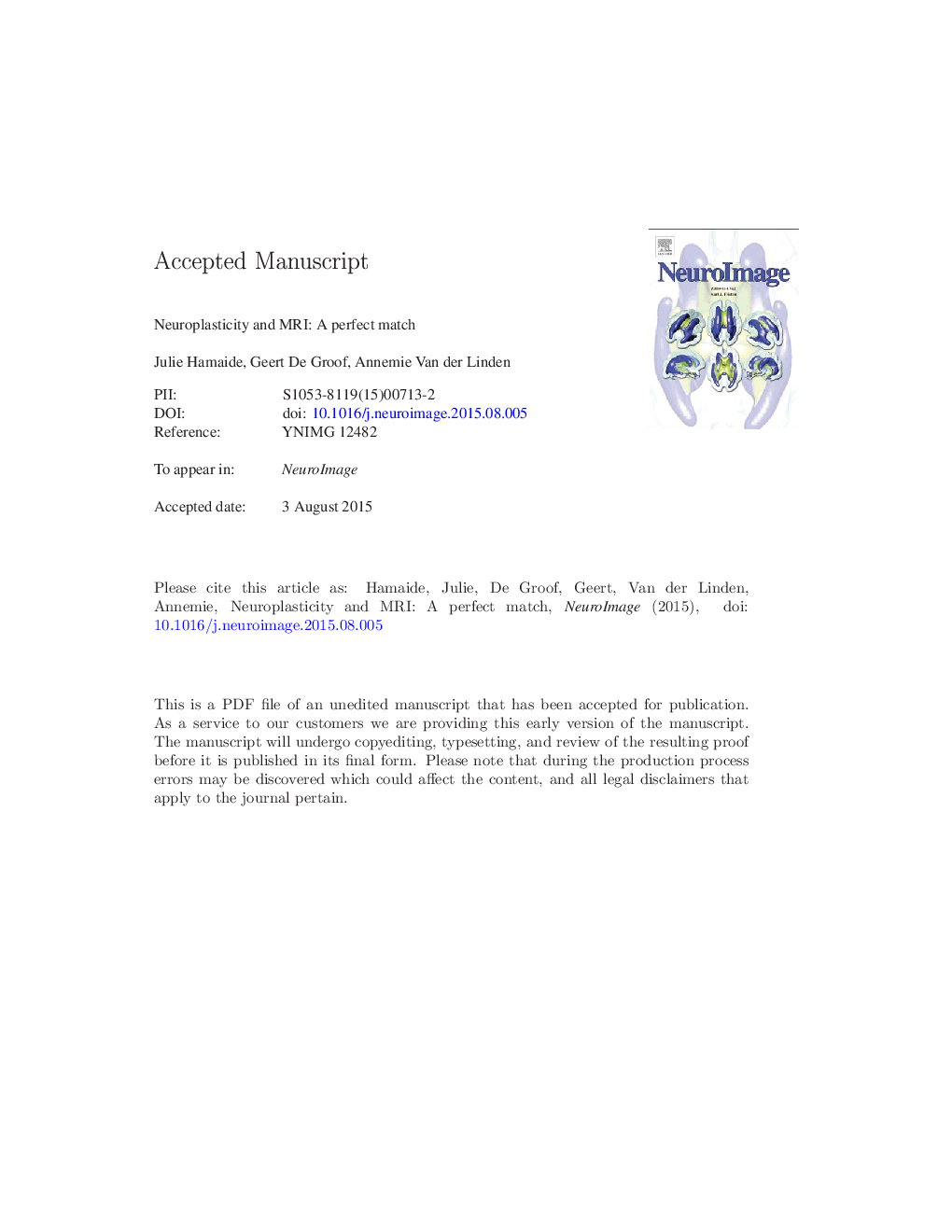| Article ID | Journal | Published Year | Pages | File Type |
|---|---|---|---|---|
| 6023781 | NeuroImage | 2016 | 46 Pages |
Abstract
Numerous studies have illustrated the benefits of physical workout and cognitive exercise on brain function and structure and, more importantly, on decelerating cognitive decline in old age and promoting functional rehabilitation following injury. Despite these behavioral observations, the exact mechanisms underlying these neuroplastic phenomena remain obscure. This gap illustrates the need for carefully designed in-depth studies using valid models and translational tools which allow to uncover the observed events up to the molecular level. We promote the use of in vivo magnetic resonance imaging (MRI) because it is a powerful translational imaging technique able to extract functional, structural, and biochemical information from the entire brain. Advanced processing techniques allow performing voxel-based analyses which are capable of detecting novel loci implicated in specific neuroplastic events beyond traditional regions-of-interest analyses. In addition, its non-invasive character sets it as currently the best global imaging tool for performing dynamic longitudinal studies on the same living subject, allowing thus exploring the effects of experience, training, treatment etc. in parallel to additional measures such as age, cognitive performance scores, hormone levels, and many others. The aim of this review is (i) to introduce how different animal models contributed to extend the knowledge on neuroplasticity in both health and disease, over different life stages and upon various experiences, and (ii) to illustrate how specific MRI techniques can be applied successfully to inform on the fundamental mechanisms underlying experience-dependent or activity-induced neuroplasticity including cognitive processes.
Keywords
ASLCA1ADCmRNAGFAPNaAMEMRIMRSBOLDPNNDTIVBMCBFIGF-1DcxNMDAN-methyl-d-aspartateISHHDACiChABCCA3Gap43MWMTBMphMRIMnCl2CMRO2mean diffusionCBVCD11Bcluster of differentiation molecule 11bNgRDBMOTX2CD68rCBVrsfMRITMSPFFBDNFCa2 +axial diffusivityIn situ hybridizationpharmacological MRIN-acetyl aspartatemessenger RNATrainingcornu ammonis 3cornu Ammonis 1AChEIRNAribonucleic acidMRIradial diffusivityChoSPECTBrdUbromodeoxyuridineTaurineExperienceTranscranial magnetic stimulationproton densitydiffusion tensor imagingMagnetic resonance imagingmanganese-enhanced magnetic resonance imagingResting state functional magnetic resonance imagingfMRIfunctional magnetic resonance imaginglong-term potentiationLTPsingle-photon emission computed tomographycomputed tomographyPositron emission tomographycerebral blood flowCerebral blood volumeRelative cerebral blood volumeAnimalTauCNSdoublecortinecho timeRepetition timeBBBBlood–brain barriercentral nervous systemperineuronal netsCognitionapparent diffusion coefficientmagnetic resonance spectroscopyBrain-derived neurotrophic factorLINGO-1arterial spin labelingMorris water mazeManganeseselective serotonin reuptake inhibitorsSSRItensor-based morphometryDeformation-based morphometryvoxel-based morphometrycerebral metabolic rate of oxygenfractional anisotropyNeuroplasticityPETGlial fibrillary acidic proteingrowth-associated protein 43PirBCalciumchondroitinase ABCCholineGABAgamma-amino butyric acidGluglutamateNogo receptor
Related Topics
Life Sciences
Neuroscience
Cognitive Neuroscience
Authors
Julie Hamaide, Geert De Groof, Annemie Van der Linden,
